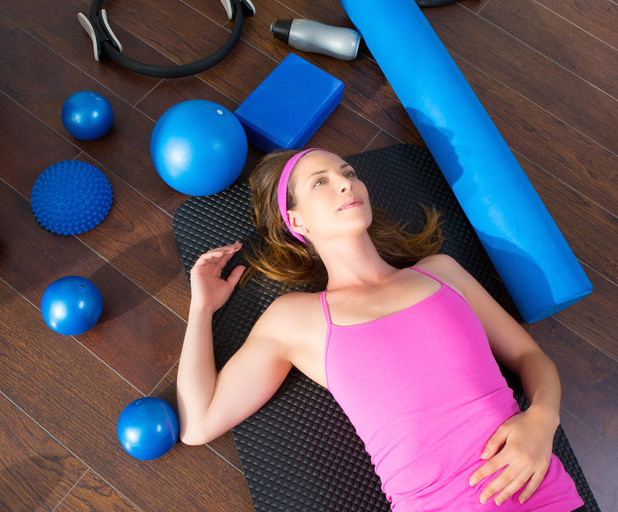
Recovery Tips: 6 Ways to Reduce Muscle Soreness
Sore muscles a day or two after a tough workout is common, and known as DOMS or Delayed Onset Muscle Soreness. This soreness occurs 24 to 48 hours after strenuous exercise. Whether you have trouble sitting or walking down stairs, or feel a little bit like you’ve been hit by a bus – don’t panic, this soreness means you worked new muscles you do not normally target, or pushed yourself past your limit. Soreness in muscles happen because you essentially causes micro tears in the muscle fibers through strenuous exercise, that are then rebuilt stronger and denser through recovery.
Here are some tips for helping you avoid excessive muscle soreness, and for managing it when you do wake up feeling incredibly sore. Make sure to pay attention to your body and recognize the difference between DOMS and an exercise related injury. In general, pain that is sharp or an “ouch” type of pain could be an injury, whereas overall soreness or aches is normal. If in doubt always consult a medical professional.
1. Warmup Properly
Warming up properly before any type of workout is essential for preventing injury and reducing the risk of muscle soreness. Joints and muscles should be properly warm before starting any exercise program. Focus on dynamic movements and stretching for 5-10 minutes prior to your sweat session.
2. Stay Hydrated
Hydrating properly before, during, and after your workout is extremely important. Your muscle cells needs water and dehydration can severely inhibit your muscles’ ability to work and recover. Make sure to drink plenty of water throughout the day. A good way to ensure you are properly hydrated is to check that your urine is clear.
3. Ice Ice Baby
Icing your muscles after a tough workout or taking a cold shower or ice bath can reduce muscle soreness by up to 20% some studies show. The cold reduces inflammation of the muscles and may shorten recovery time.
4. Stretch it Out
Stretching is so important after any workout. After contracting your muscles during your workout, you need to stretch them out and bring them back to resting length. After a workout you should focus on static stretches that increase flexibility and range of motion.
5. Massage & Foam Rolling
Deep tissue massage or foam rolling are great ways to increase blood flow to the muscles, reduce soreness and pain, and increase speed of recovery. You can also massage out any knots that are major problem areas and improve circulation. If you do not have a foam roller, I definitely suggest investing in one!
6. Healthy Nutrition
Make sure to eat a healthy post-workout snack that contains both carbs and protein. Your body needs nutrients and energy to rebuilt the muscles. Without the necessary protein to rebuild muscles, and carbs to refill glycogen stores, your body cannot recover. Some great snack options are: banana and peanut butter, whole wheat pita bread and hummus or a protein shake.
Leave your comments and questions below! What works best for you when muscle soreness hits?
Your Trainer,
xoxo
Marielle Collins – SummerGirl Fitness
